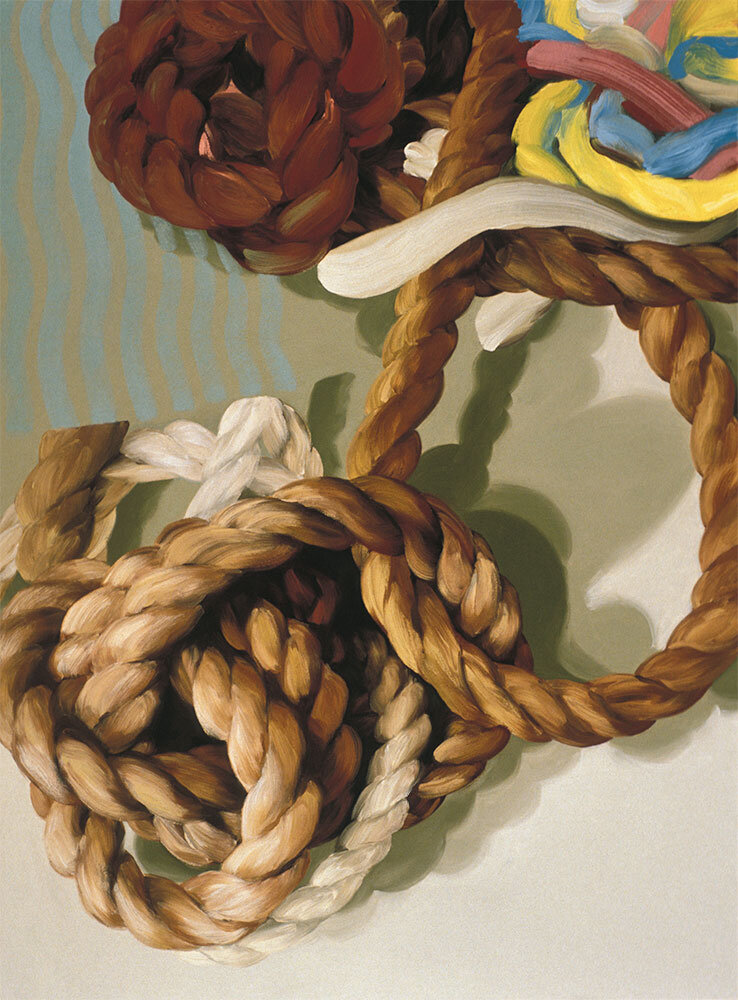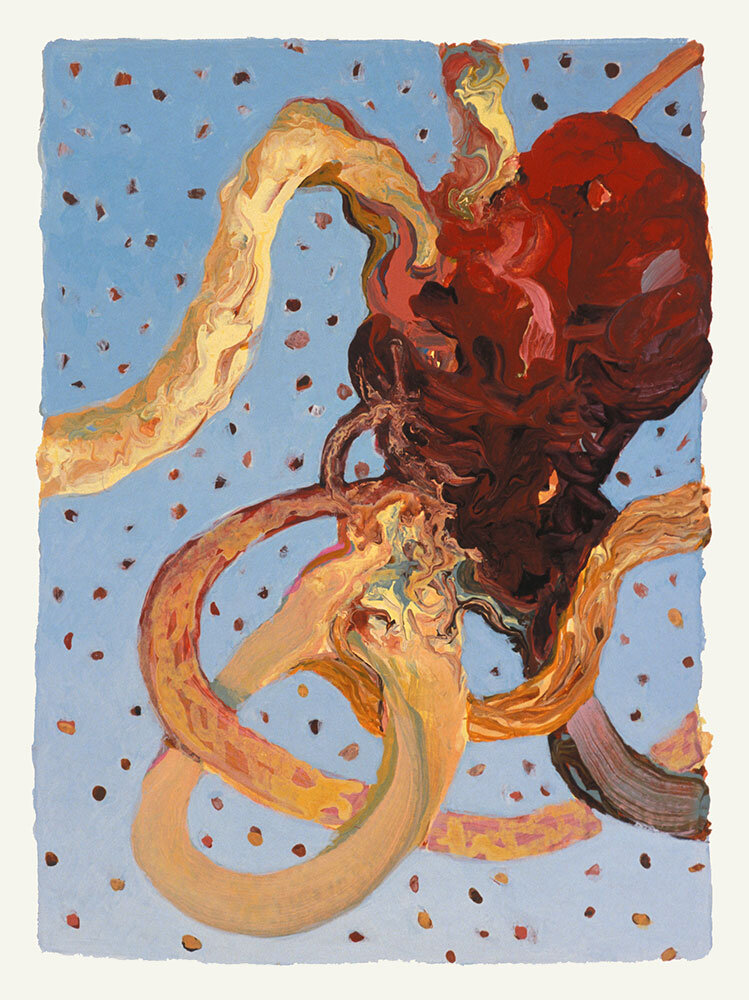Dissections
Canvases
Rope #14: Pendulum, oil on canvas, 40” x 54”, 2000
Rope #13: Décor, oil on canvas, 54” x 40”, 2000
Rope #8: Inside Out, oil on canvas, 40” x 32”, 1999
Rope #6: Pink, oil on canvas, 26” x 32”, 1999
Rope #5: Portrait, oil on canvas, 32” x 26”, 1999
Rope #4: Pop Dots, oil on canvas, 54” x 40”, 1999
Works on Paper
Out of Body, acrylic on paper, 30” x 22 ¼”, 2001
Brain Stem, acrylic on paper, 30” x 22 ¼”, 2001
Recombination, acrylic on paper, 30” x 22 ¼”, 2001
Acquired Characteristics, acrylic on paper, 30” x 22 ¼”, 2001
Nesting, acrylic on paper, 30” x 22 ¼”, 2001
Crossing Over, acrylic on paper, 30” x 22 ¼”, 2001
Double Entendre, acrylic on paper, 30” x 22 ¼”, 2001
Miniatures
TRB 0126, acrylic on paper, 5¼” x 3¾”, 2001
TRB 0122, acrylic on paper, 5¼” x 3¾”, 2001
TRB 0113, acrylic on paper, 5¼” x 3¾”, 2001
TRB 0112, acrylic on paper, 5¼” x 3¾”, 2001
TRB 0010, acrylic on paper, 5¼” x 3¾”, 2000
TRB 006, acrylic on paper, 5¼” x 3¾”, 2000
Dissections
These paintings grow out of my long-standing interest in representations of the body combined with an emotional awareness of its vulnerability. The paintings deal with our bodies as physical, biological material, and are intended to act as stand-ins for the body and as metaphors for bodily processes and experience. Their primary imagery is ropes that are wrapped and twisted into loose, knot-like shapes that intertwine and fold back on themselves. I chose the rope for its flexibility in terms of the shapes into which it can be formed and for the potential references through those shapes to ideas of fluidity, repetition, knotting, strength, intricacy of a pathway, etc. Even before the rope is manipulated, it already functions metaphorically because of the repetition built into its very structure and the striated look of its surface that is reminiscent of muscle tissue. Also included in many of the paintings are areas that refer to internal organs and areas of patterning suggestive of cellular structures or the body’s circulatory and nervous systems. I manipulate the paint purposely in ways that range from loosely “realistic” to, fairly schematic or abstract. Both image and paint are intended to stimulate associations with physical experience. The “cuts” and disjunctions in the images refer to the idea of dissecting a specimen, while reminding us that this is, after all, only a painting.
— Susan Brenner


















